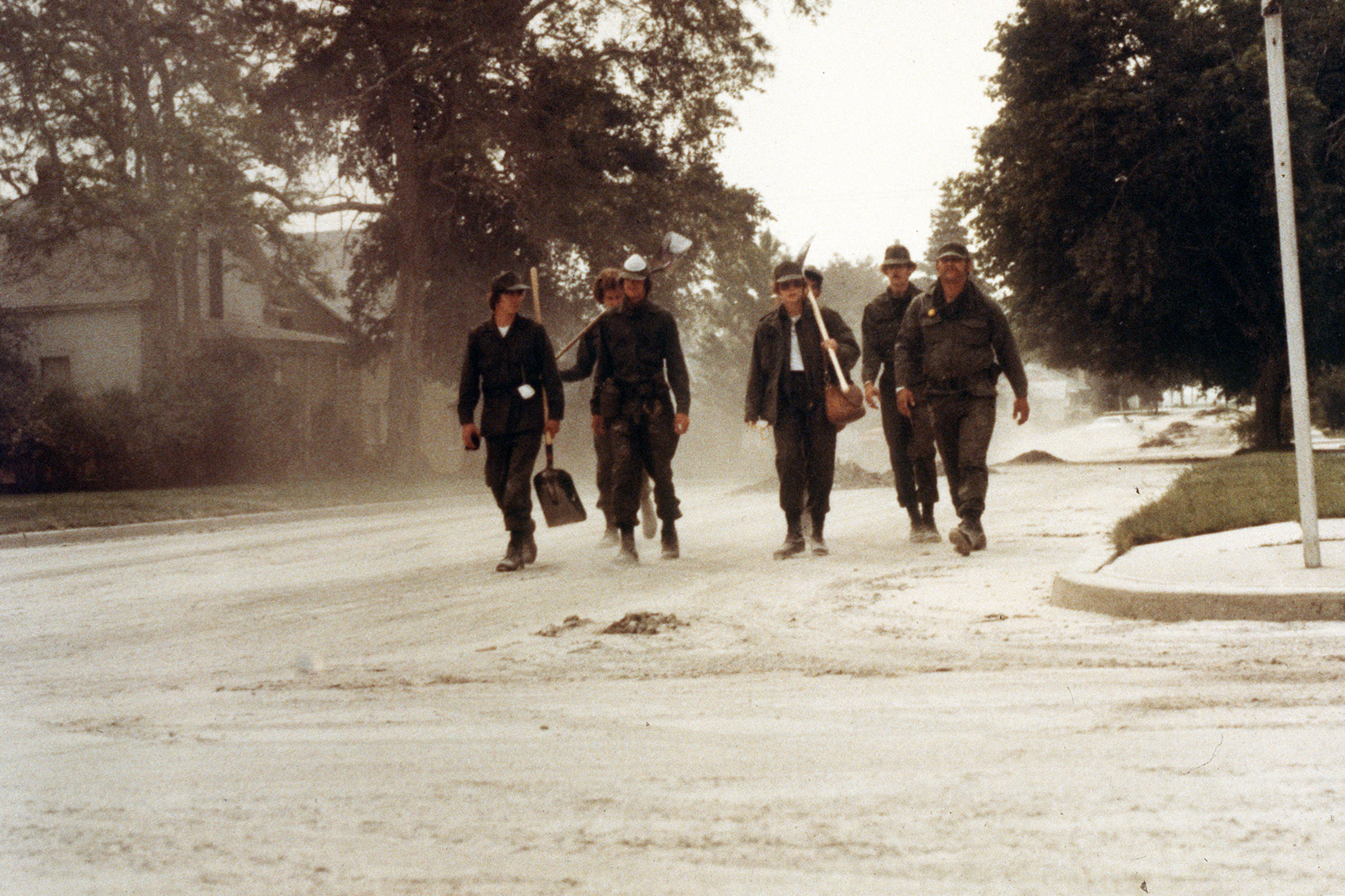42 for Loowit’s 42nd vol. 6: Beauty in Destruction

Volcanoes leave one heck of a mess to clean up when they explode near civilization. It’s not pretty, although as you can see above, it sometimes looks pretty metal.
While Washington State called out the National Guard and folks figured out how to cope with the copious ash, volcanologists picked through the ruins of a once-verdant forest, measuring various volcanic deposits and learning all they could from them. At first, it was shocking. But once you started adjusting to the change, you could start seeing the beauty in the devastation.
Look at the channel carved through the debris avalanche here: you can see gorgeous reds in the gray where hydrothermally altered rock from the former summit mixed with the more prosaic grays of younger material. The iron-stained creek flowing through added more color to the moonscape. It was alien and strangely pretty.

Looking west (down-valley) on debris flow near its distal margin. Cowlitz County, Washington. July 17, 1980. Caption and image credit: USGS
The Pacific Northwest is notoriously rainy aside from relatively dry summers. As spring runoff collected in low spots in the deposits, colorful ponds formed. There’s a certain amount of joy to be found in all the various hues.
The place remained rather gray through the summer, but when snows dusted the blasted landscape with winter white, the stark and pristine views could be breathtaking in a way that forested slopes couldn’t match.

Aerial view of snow-covered Mount St. Helens from near Spirit Lake. Skamania County, Washington. April 25, 1981. Caption and image credit: USGS
Unfortunately for residents living downstream, the volcano remained active and prone to lahars for many years. Those, too, despite the mess they created, could look pretty amazing.
Minor eruptions continued from the growing dome for years after the May 18th blast. Loowit blew apart more than one dome, always replacing it with another. They, too, had a grim sort of beauty.

Hazards – gas and ash burst from south side of dome; viewed through wide angle lens. Skamania County, Washington. April 29, 1983. Caption and image credit: USGS
And, this being the Pacific Northwest, life didn’t take long to return to the devastated slopes. Pocket gophers burrowed through ash, bringing up soil. Some young trees that had been buried under snow popped back up through the overlying deposits, not much worse for wear. Hardy perennials like lupine and fireweed quickly began colonizing denuded slopes. Even delicate-looking avalanche lilies thrived.
Active volcanoes are engaged in milennia-long cycles of creation and destruction. Nothing lasts forever: not the dense old-growth forests on their slumbering flanks, nor the shattered, bare, lava and ash-strewn vistas left behind after their wakeful times.
Loowit will one day again be a perfect cone with tremendous conifers on her flanks; she will someday again be hurling towering columns of ash into the sky. And she is gorgeous either way.
Featured image: Washington National Guard members conducted search and rescue missions and clean-up operations following the eruption of Mt. St. Helens on May 18, 1980. Helicopter crews took off heading into ash and debris to save lives, and another 500 Guardsmen were immediately called to support multiple agencies and assist as needed in what is still known as the National Guard’s finest hour. Caption and image credit: National Guard (CC BY 2.0)

Rosetta Stones and Dana Hunter’s Unconformity wouldn’t be possible without you! If you like my content, there are many ways to show your support.
This website is a member of the Amazon Affiliates program. I get a small commission when you use my affiliate link to make a purchase.
Thank you so much for your support!






